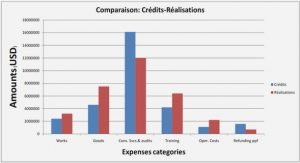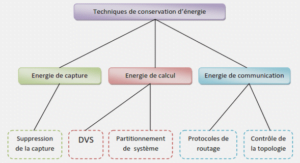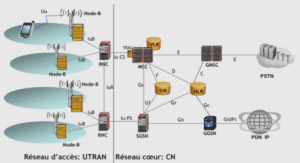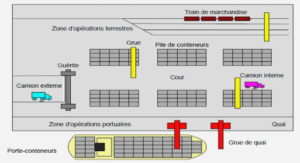Over the last years, the software development industry has focused on improving the processes to develop products that satisfy user quality requirements. This has been known as “the user experience”, which refers to software characteristics such as ease-of-use, security, stability and reliability (Côté, Suryn et al. 2006). In addition, Côté, Suryn et al. mentions that the software industry has defined the system quality as a very important part on the user experience. For example, the international standard ISO 25010 (ISO/IEC 2011) defines the quality of a system as the degree to which the system satisfies the stated and implies needs of its various stakeholders, and thus provides value. Both, the software characteristics and stakeholders needs have been defined in a number of international standards by using quality models that categorize the software product quality and allow its evaluation.
As a result, there are different quality models proposals in software engineering which help in defining quality requirements and establishing the mechanisms to evaluate them from different “point of views”. Next, we present the most recent quality model published in software engineering today.
ISO 25010 (SQuaRE) – System and software quality models
The ISO 25010 Systems and software product Quality Requirements and Evaluation (SQuaRE) – System and software quality models (ISO/IEC 2011), revises the ISO 9126-1 standard and incorporates some new characteristics and corrections. These characteristics and corrections have been listed in the standard and are shown next according as they appear in the original document.
• The scope of the quality models has been extended to include computer systems, and quality in use from a system perspective.
• Context coverage has been added as a quality in use characteristic, with subcharacteristics context completeness and flexibility.
• Security has been added as a characteristic, rather than a subcharacteristic of functionality, with subcharacteristics confidentiality, integrity, non-repudiation, accountability, and authenticity.
• Compatibility (including operability and co-existence) has been added as a characteristic.
• The following subcharacteristics have been added: functional completeness, capacity, user error protection, accessibility, availability, modularity, and reusability.
• The compliance subcharacteristics have been removed as compliance with laws and regulations is part of overall system requirements, rather than specifically part of quality.
• The internal and external quality models have been combined as the product quality model.
• When appropriate, generic definitions have been adopted, rather than using softwarespecific definitions.
• Several characteristics and subcharacteristics have been renamed .
In addition, the ISO 25010 standard redefines two quality models which constitute the standard and are described as:
• The quality in use model which is composed of five characteristics that relate to the outcome of interaction when a product is used in a particular context of use. This model is applicable to the complete human-computer system, including both computer systems in use and software products in use and,
• The product quality model which is composed of eight characteristics that related to static properties of software and dynamics properties of computer systems. This model is applicable to both computer systems and software products
Quality in use model
The ISO 25010 standard mentions that the quality in use of an system characterizes the impact that the product (system or software product) has on stakeholders and it is determined by the quality of the software, hardware and operating environment, and the characteristics of the users, tasks and social environments (ISO/IEC 2011).
Next, the five characteristics are presented:
• Effectiveness. Accuracy and completeness with which users achieve specific goals.
• Efficiency. Resources expanded in relation to the accuracy and completeness with which users achieve goals.
• Satisfaction. Degree to which user needs are satisfied when a product or system is used in a specified context of use.
• Freedom from risk. Degree to which a product or system mitigates the potential risk to economic status, human life, health or environment.
• Context coverage. Degree to which a product or system can be used with effectiveness, efficiency, freedom from risk and satisfaction in both specified contexts of use and in contexts beyond those initially explicitly identified.
In addition, the ISO 2010 (ISO/IEC 2011) standard mentions that the product quality model focuses on the target computer system which could include an information system, one or more computer systems and communication systems such as local area network and the internet. Each characteristic is defined as:
• Functional suitability: Degree to which a product or system provides functions that meet stated and implied needs when it is used under specified conditions.
• Performance efficiency: Performance relative to the amount of resources used under stated conditions.
• Compatibility: Degree to which a product, system or component can exchange information with other products, system or components, and/or perform its required functions, while sharing the same hardware or software environment.
• Usability: Degree to which a product or system can be used by specified users to achieve specified goals with effectiveness, efficiency and satisfaction in a specified context of use.
• Reliability: Degree to which a system, product or component performs specified functions under specified conditions for a specific period of time.
• Security: Degree to which a product or system protects information and data so that persons or other products or systems have the degree of data access appropriate to their types and levels of authorization.
• Maintainability: Degree of effectiveness and efficiency with which a product or system can be modified by the intended maintainers.
• Portability: Degree of effectiveness and efficiency with which aproduct, system or component can be transferred from one hardware, software or other operational or usage environment to another.
Once defined, the quality properties must be associated with quality measures. According to ISO 25010 standard (ISO/IEC 2011), measures of the quality characteristic or subcharacteristic, can be directly measured, or a collection of properties need to be identified that together cover such characteristic or subcharacteristic, obtain quality measures for each, and combine them computationally. The measurement process of quality characteristics is an important part in the research because this defines the form in which the performance of cloud computing applications will be evaluated. The next section presents the measurement process used in software engineering in order to arrive to derive quality measures corresponding to the quality characteristic or subcharacteristic of a software system.
|
Table des matières
INTRODUCTION
CHAPTER 1 PRESENTATION OF RESEARCH..
1.1 Motivation
1.2 Problem definition
1.3 Research question
1.4 Methodology
1.4.1 Definition
1.4.2 Planning
1.4.3 Development
1.4.4 Interpretation
CHAPTER 2 LITERATURE REVIEW
2.1 Quality models in software engineering
2.1.1 ISO 25010 (SQuaRE) – System and software quality models
2.1.1.1 Quality in use model
2.1.1.2 Product quality model
2.2 Measurement process in software engineering
2.2.1 ISO 25020 Software quality requirements and evaluation (SQuaRE) – Quality measurement – Measurement reference model and guide
2.2.2 ISO 15939 Measurement process
2.2.2.1 Goal
2.2.2.2 Measurement process activities
2.3 Performance measurement of computer systems
2.3.1 ISO 14756 measurement process model for CBSS
2.3.1.1 Recommended steps of measurement process of CBSS
2.3.2 Performance measurement of cloud computing systems
2.3.3 Performance measurement of cloud computing applications
2.4 Cloud computing
2.4.1 Definition and type of services in cloud computing
2.4.2 Architecture
2.5 Hadoop technology
2.5.1 Description
2.5.2 Hadoop subprojects
2.5.3 Hadoop Distributed File System (HDFS)
2.5.3.1 HDFS Goals
2.5.3.2 HDFS Architecture
2.5.3.3 HDFS Components
2.5.4 Hadoop MapReduce programming model
2.5.4.1 MapReduce execution phases
CHAPTER 3 A PERFORMANCE MEASUREMENT MODEL FOR CLOUD COMPUTING APPLICATIONS (PMMoCCA)
3.1 Performance measurement framework for cloud computing (PMFCC)
3.1.1 Performance Concepts as software system requirements
3.1.2 Definition of system performance concepts
3.1.3 Definition of the performance concept for cloud computing application
3.1.4 Relationship between performance concepts and sub concepts
3.1.5 The performance measurement framework for cloud computing
3.2 Performance measurement model for cloud computing applications (PMMoCCA)
3.2.1 Relationships between measures of cloud computing applications and performance concepts
3.2.2 Selection of key performance concepts to represent the performance of cloud computing applications
3.2.2.1 Feature selection based on comparasion of means and variances
3.2.2.2 Relief algorithm
3.2.3 Choosing a methodology to analyze relationships between performance
concepts
3.2.3.1 Taguchi method of experimental desing
3.3 Experiment
3.3.1 Experiment setup
3.3.2 Mapping of performance measures onto PMFCC concepts
3.3.3 Selection of key measures to represent the performance of CCA
3.3.4 Analysis of relationships between key performance measures
3.4 Results
3.4.1 Analysis and interpretation of results
3.4.2 Statistical data analysis of processing time
3.4.2 Statistical data analysis of job turnaround
3.4.2 Statistical data analysis of disk bytes written
3.5 Summary of performance measurement analysis
CONCLUSION
![]() Télécharger le rapport complet
Télécharger le rapport complet






